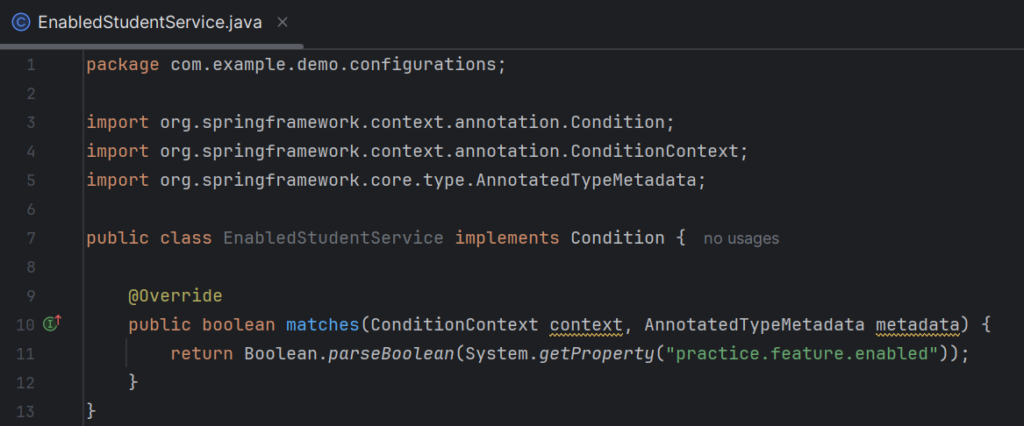@Configuration Annotation
The @Configuration annotation helps us to define a simple POJO class as bean with the help of @Bean annotation.
Beans define with the help of @Configuration class are singleton classes.
@Configuration internally is a component as it implicitly uses @Component annotation similar of @Service and @Repository.

Implementation:
Create a simple StudentService class not having ant annotation as highlighted below:

Create StudentConfig class and declare one class level @Configuration annotation.
Now, inject the earlier created StudentService class using @Bean annotation which will help us to create an instance on run time.

Inject StudentConfig class with the help of @Autowired annotation.

Important Note: @configuration and @Bean annotations allow us to create beans conditionally.
Based Condition class implementation and @Conditional annotation:
Create EnableStudentService class implementing Condition interface and override the matches() method for writing custom condition logic which will be returning true or false.

Declare @Conditional annotation just below to @Bean annotation to create bean instance conditionally at runtime.

Based on property using @ConditionalOnProperty annotation:

The studentService() bean will only be created if practice.feature.enabled=true in application.properties file.
matchIfMissing = false ensures that if the property is missing, the bean won’t be created.
Note: The @Autowired(required = false) annotation prevents errors by allowing the application to proceed even if the bean is unavailable.

Important Note:
@Conditional helps us to register bean dynamically based on conditions. It also provides us the flexibility to enable or disable bean instantiation without modifying the code. Minimizes the creation of unnecessary beans.
Learn more about Spring Boot

Imran Khan, Adobe Community Advisor, certified AEM developer and Java Geek, is an experienced AEM developer with over 12 years of expertise in designing and implementing robust web applications. He leverages Adobe Experience Manager, Analytics, and Target to create dynamic digital experiences. Imran possesses extensive expertise in J2EE, Sightly, Struts 2.0, Spring, Hibernate, JPA, React, HTML, jQuery, and JavaScript.
